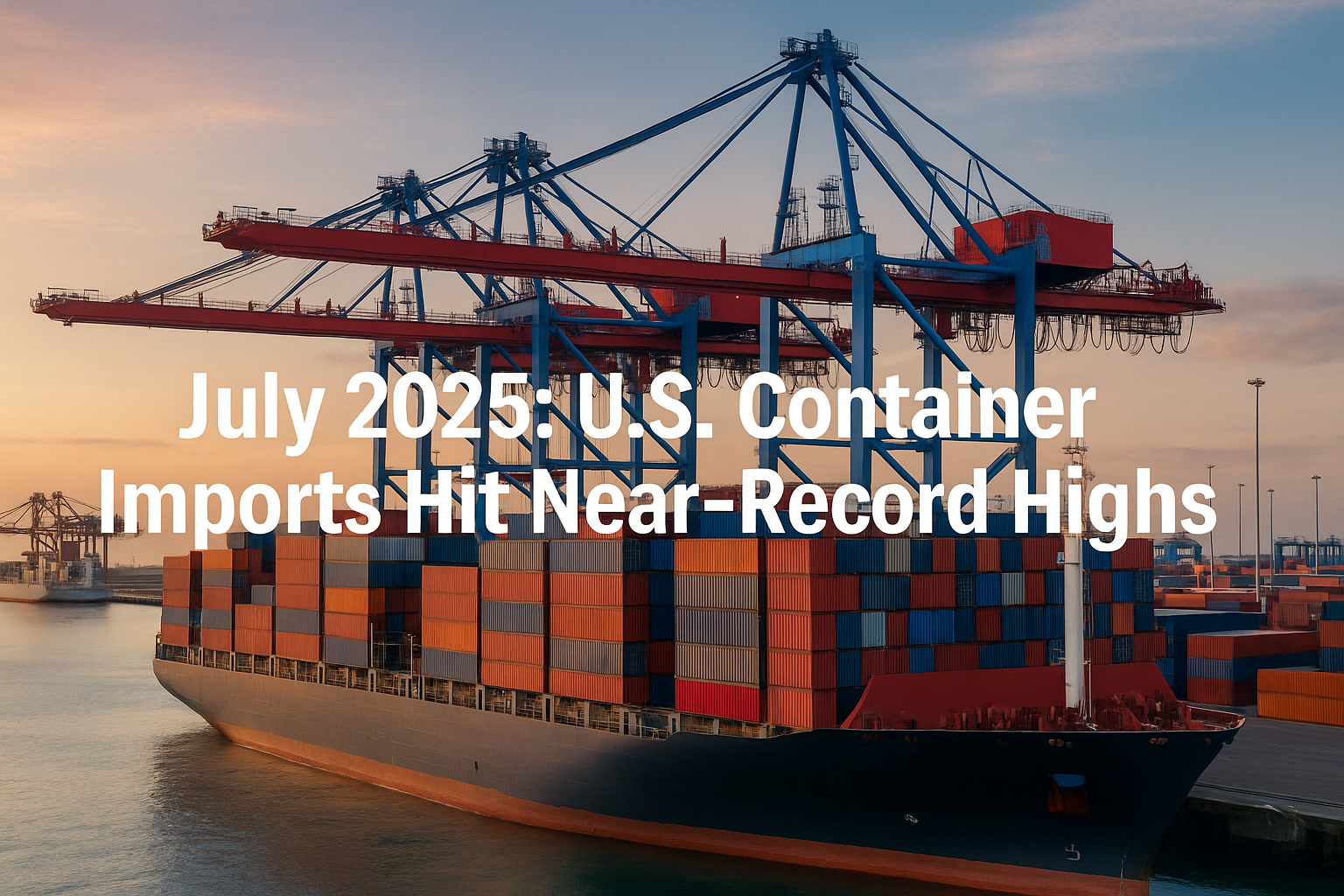In July 2025, U.S. container imports surged to nearly 2.62 million TEUs, marking an 18% month-over-month increase and one of the highest monthly volumes since the pandemic-era shipping boom.
While economists view the surge as a sign of consumer resilience, the sheer scale of port congestion and digital coordination across the supply chain brings new challenges to light—particularly around maritime logistics security and operational technology (OT) vulnerabilities.
This surge, tracked by Descartes Systems Group’s Global Shipping Report, reflects both economic momentum and the fragility of port infrastructure under pressure.
U.S. Ports at Capacity — A Strain on Infrastructure
According to Descartes’ July 2025 report, container imports rose sharply from June’s 2.21 million TEUs to 2.62 million TEUs, a 18.2% month-to-month jump.
Major gateways—including Los Angeles, Long Beach, New York/New Jersey, and Savannah—reported extended vessel wait times, equipment shortages, and staffing strain.
Key Contributing Factors:
- Consumer demand rebound following a strong Q2 retail season
- Front-loading of imports ahead of potential trade policy shifts and the de minimis repeal
- Diversions from Red Sea routes forcing global carriers to adjust schedules and port calls
- Increased imports from Asia, particularly China, Vietnam, and India
While the surge highlights economic confidence, it also magnifies operational bottlenecks that ripple through trucking, rail, and warehouse networks.
The Cybersecurity Layer — Invisible But Critical
Behind every container movement lies a digital infrastructure: terminal operating systems, electronic data interchange (EDI) networks, IoT sensors, and OT systems that keep cranes, yard equipment, and logistics data synchronized.
This July surge magnified three cybersecurity stress points:
- Legacy OT systems under heavy operational load
- Expanded attack surface as ports connect more partners and systems for throughput efficiency
- Insider risk from overtime fatigue, third-party contractors, and system overrides during congestion
When volumes spike, cybersecurity hygiene often takes a back seat to operational urgency—creating precisely the opportunity attackers exploit.
In 2024, a single compromised EDI connection temporarily froze inbound shipments across two East Coast terminals. July’s surge recreated many of the same high-risk conditions.
Operational Technology Under Stress
From cranes and conveyor belts to yard management systems, OT environments were pushed to near-continuous operation throughout July.
Without proper segmentation and access control, OT networks remain vulnerable to lateral movement from compromised IT systems—a key risk outlined in the U.S. Coast Guard’s 2025 Cybersecurity Rule, which officially took effect on July 16, 2025.
Recommended Safeguards:
- Implement Zero Trust segmentation between OT and IT systems
- Enforce multi-factor authentication for port control systems and vendor access
- Conduct real-time monitoring of vessel and terminal communications
- Run simulated incident response drills under high-volume conditions
These aren’t theoretical measures—they’re now compliance expectations under IMO MSC.428(98) and USCG cybersecurity mandates.
Lessons for Maritime Stakeholders
The July import wave underscores the need to build resilience, not just capacity.
For shipping lines, terminal operators, and logistics providers, the focus must shift from throughput speed to secure scalability—ensuring that systems can handle spikes in both volume and cyber risk.
Key Takeaways:
- Integrate cybersecurity into port operations planning, not as an afterthought
- Modernize visibility tools to detect both physical and digital anomalies
- Enhance training for dockworkers and operators handling networked machinery
- Align OT updates with compliance deadlines from USCG and IMO
As the industry braces for Q4 peak season, these lessons are not optional—they’re the difference between continuity and costly disruption.
The Bigger Picture — Digital Trade Meets Physical Reality
The July 2025 surge serves as a reminder that supply chain resilience is inseparable from digital resilience.
Every crane, container, and customs form now relies on data integrity.
If that data is delayed, corrupted, or compromised, the real-world consequences are immediate—missed sailings, rerouted cargo, and financial penalties.
Maritime organizations that combine advanced threat detection, compliance automation, and crew awareness programs will lead the next era of secure global trade.
Conclusion
The July 2025 U.S. container imports surge was more than a logistics milestone—it was a stress test of maritime and supply chain systems under extreme demand.
With cyberattacks on critical infrastructure rising and new compliance rules now in force, the industry can no longer separate efficiency from security.
Now is the time to harden digital foundations, audit connected systems, and prepare for the next surge—because the next one may not just strain capacity; it could test cyber resilience.
Strengthen your maritime resilience today.
Talk to The Saturn Partners about proactive cybersecurity solutions for ports, vessels, and logistics operations—built for compliance, visibility, and operational trust.

